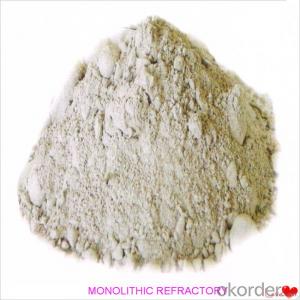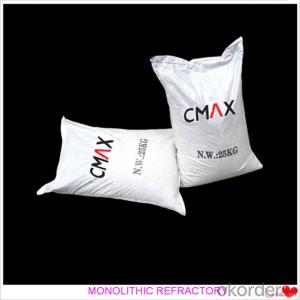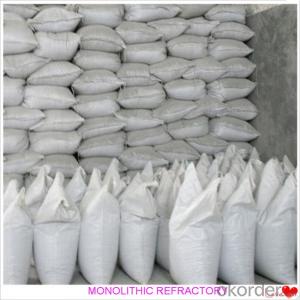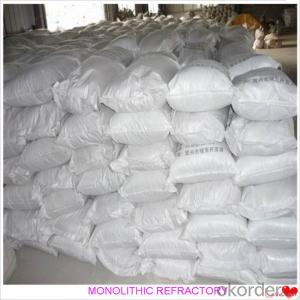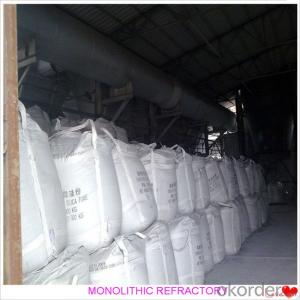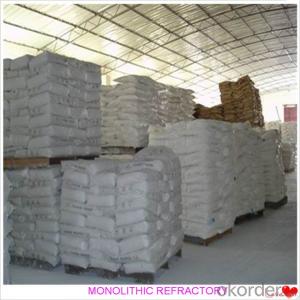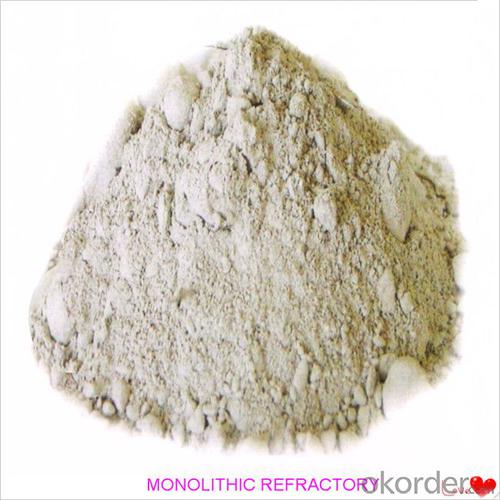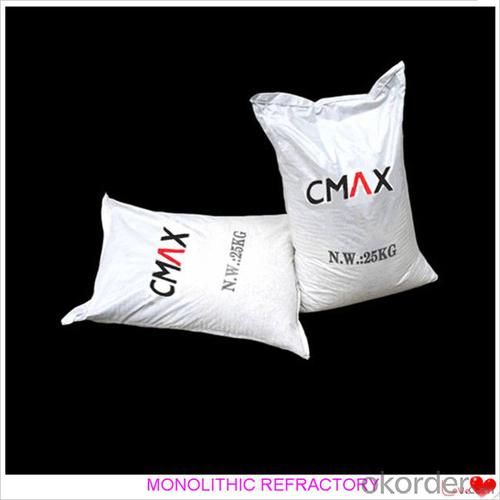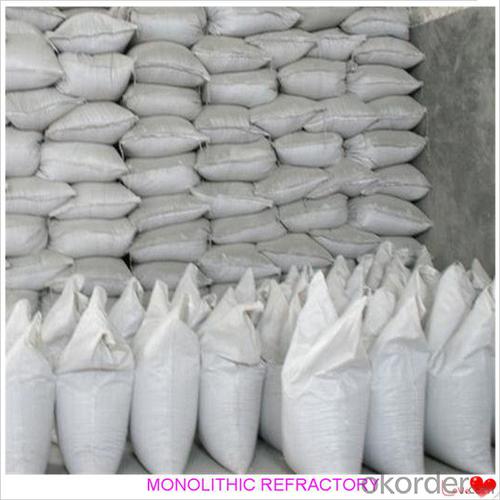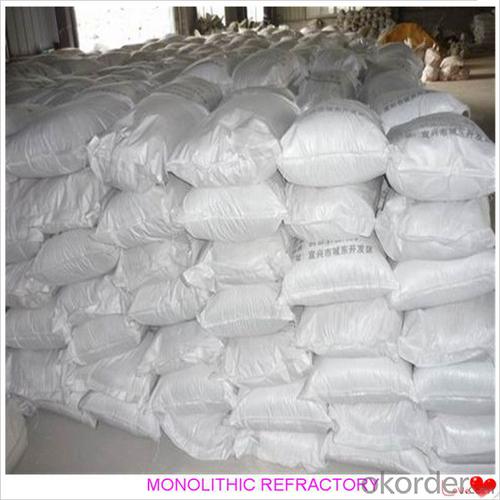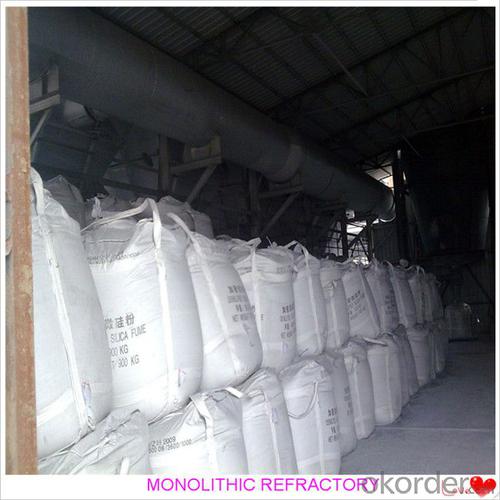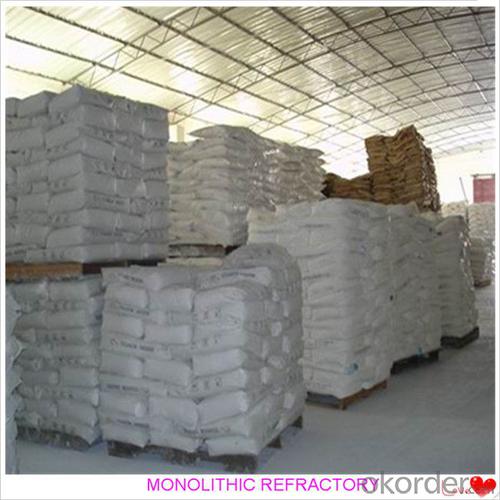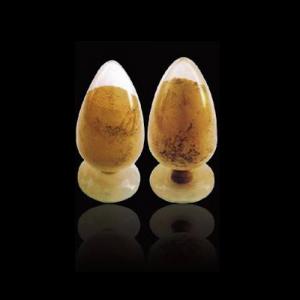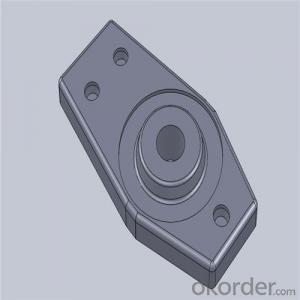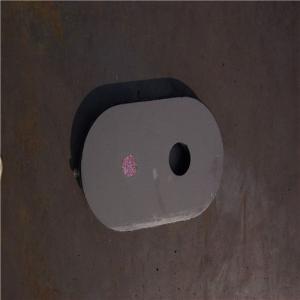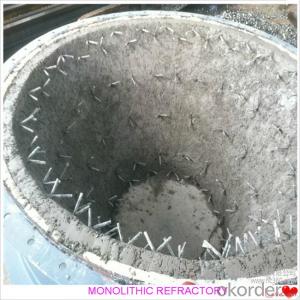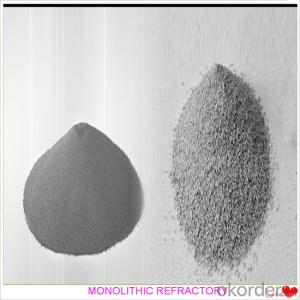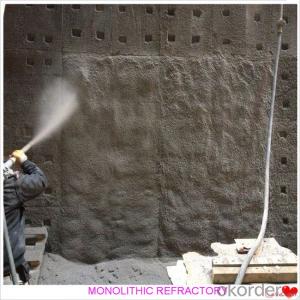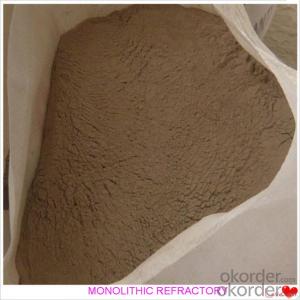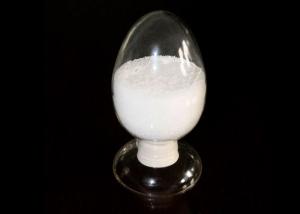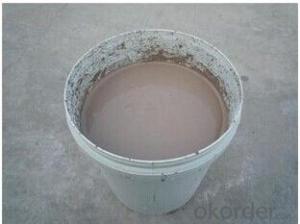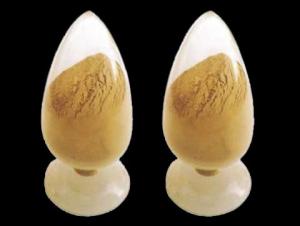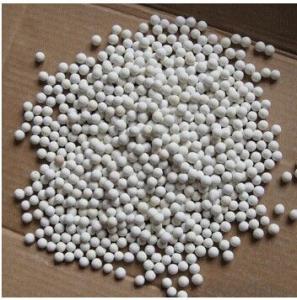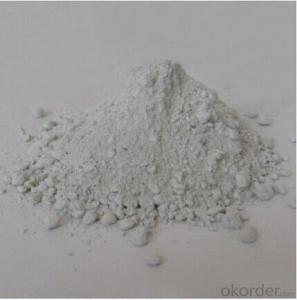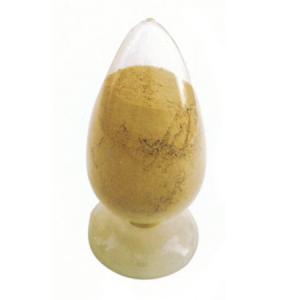Monolithic Refractories for Iron and Steel Industry:Corundum Castable for Fireplace and Industrial Furnace
- Loading Port:
- China main port
- Payment Terms:
- TT OR LC
- Min Order Qty:
- 100 kg
- Supply Capability:
- 3000000 kg/month
OKorder Service Pledge
OKorder Financial Service
You Might Also Like
Corundum Castable For Fireplace and Industrial Furnace in Iron and Steel
Product Description:
Corundum castable is manufactured according to international standards. The product is famous for its excellent abrasion resistance and low thermal conductivity. Further, these can be provided in different specifications as required by the clients. The Corundum castables are used high purity raw materials and additives as the main material, and made of under superfine powder adding technology.
Product Advantages:
The material has excellent structural stability and air tightness, and has high physical and chemical properties, also has a fine working ability.They should be used with the same material products.
Product Applications:
For feature of Corundum castable, they have excellent abrasion resistance, thermal shock resistance, high-temperature resistance, anti-corrode and have high intensity.
Designed for refractory lining of blast furnace iron and slag runners, skimmers and soon
They can be used in troughs of small and mid size BFs and in all positions of the troughs where fast tapping is required.
Product Specifications:
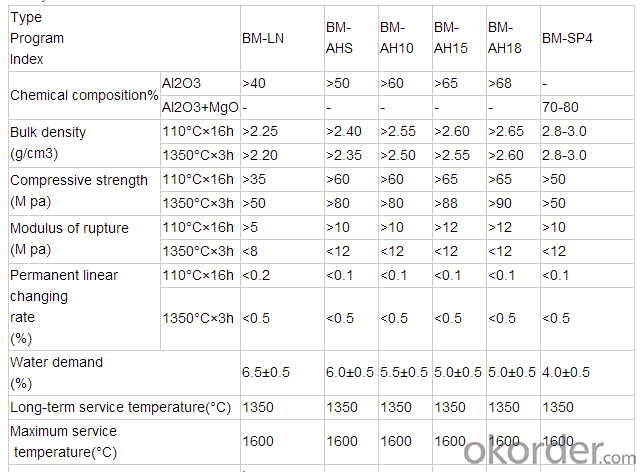
FAQ:
1. How you can control your quality?
For each production processing, we have complete QC system for the chemical composition
and Physical properties. After production, all the goods will be tested, and the quality certificate
will be shipped along with goods.
2. What's your delivery time?
It usually needs about 20days- 45 days after receiving the deposit.
3. Do you provide free samples?
Yes, we can provide a free sample for testing, If we have sample in stock,
The quantity based on the material type, The buyer should bear all the shipping costs.
4. What's your payment terms?
We can accept 30% deposit, 70% balance before shipment for ordrs over $ 2000.
5. Can we visit your Company?
Yes, certainly. You are very welcome to China and we will be honored to have a customer and friend.
Product Picture:
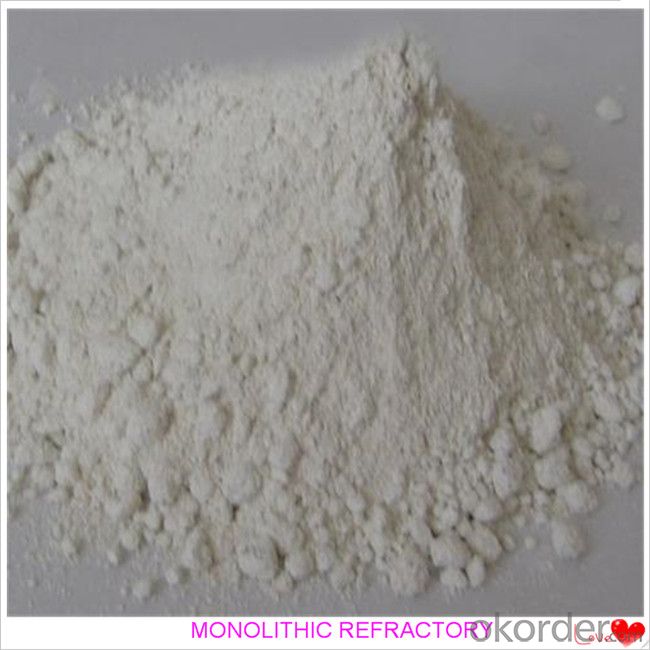
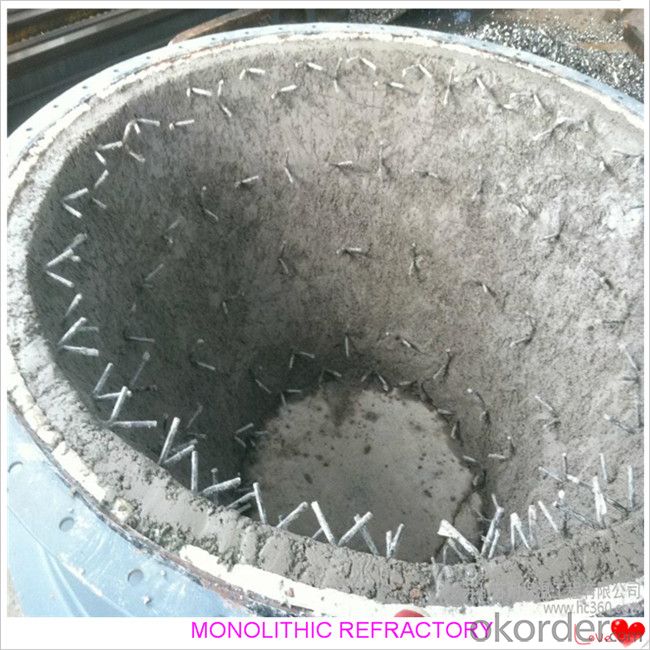
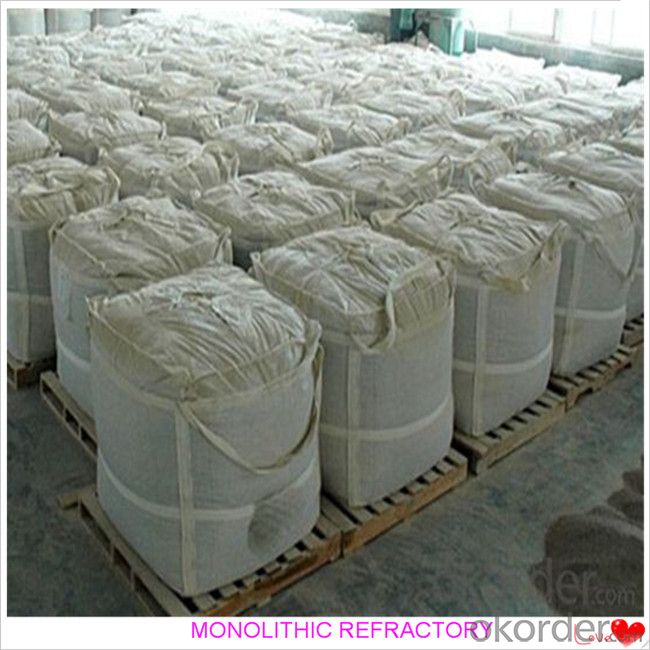
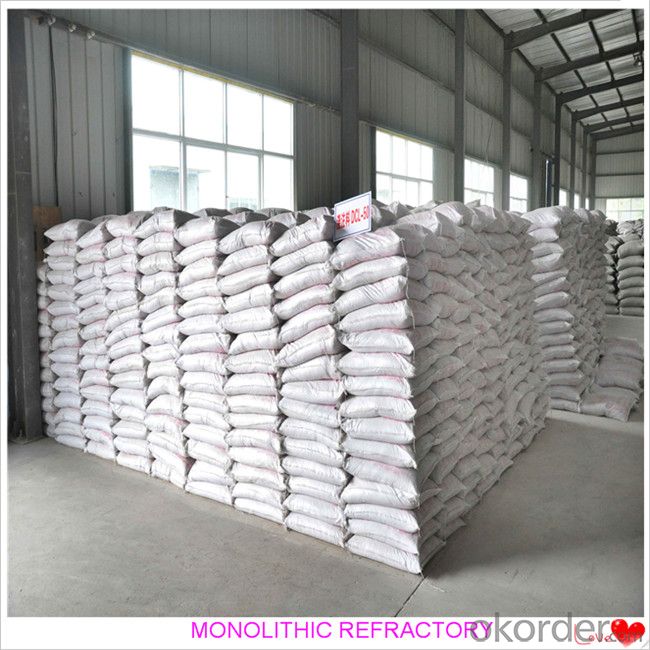
- Q: How do monolithic refractories resist abrasion in the iron and steel industry?
- Monolithic refractories are specifically designed to resist abrasion in the iron and steel industry due to their unique composition and properties. These refractories are made from a single homogeneous material, which allows them to exhibit exceptional strength and durability when subjected to continuous abrasion. One of the key factors that contribute to the abrasion resistance of monolithic refractories is their high density. These refractories are manufactured with tightly packed particles, ensuring a solid and compact structure. This density helps to minimize wear and tear caused by the constant movement of materials, such as iron and steel, within the industry. Additionally, monolithic refractories often contain high levels of alumina, which is known for its excellent abrasion resistance. Alumina is a highly refractory material that can withstand high temperatures and mechanical stress without deteriorating. Its presence in monolithic refractories provides a protective layer that resists abrasion caused by the movement and impact of iron and steel particles. Moreover, monolithic refractories can be designed with specific additives and binders that further enhance their resistance to abrasion. These additives can include silicon carbide, mullite, or zirconia, which are known for their superior mechanical strength and ability to withstand wear. The binders used in the manufacturing process also contribute to the refractory's integrity and ability to withstand abrasion by providing a cohesive structure. Overall, the combination of high density, alumina content, specialized additives, and binders makes monolithic refractories highly resistant to abrasion in the iron and steel industry. These refractories are capable of withstanding the harsh conditions and constant movement of materials, ensuring longevity and efficiency in various applications within the industry.
- Q: What are the environmental considerations associated with monolithic refractories?
- Monolithic refractories, which are used in various high-temperature applications, have several environmental considerations that need to be taken into account. Firstly, the production of monolithic refractories involves the use of raw materials such as clay, silica, and alumina, which are often mined from the earth. The extraction of these materials can result in habitat destruction, soil erosion, and water pollution. Additionally, the manufacturing process of monolithic refractories typically involves high-energy consumption and the release of greenhouse gases. The firing of refractory materials requires high temperatures, often achieved through the burning of fossil fuels, which contributes to carbon dioxide emissions and climate change. These emissions can have far-reaching environmental impacts, including air pollution, acid rain, and the depletion of the ozone layer. Furthermore, the disposal of monolithic refractories at the end of their useful life can also pose environmental challenges. While monolithic refractories are highly durable and long-lasting, there may come a point when they need to be replaced or repaired. The disposal of refractory waste can be problematic, as it often contains hazardous materials like chromium, lead, and asbestos. Improper disposal methods can lead to soil and water contamination, posing risks to human health and the environment. To address these environmental considerations, efforts are being made to develop more sustainable refractory materials and manufacturing processes. For instance, alternative raw materials like recycled refractory materials or industrial by-products can be used to reduce the environmental impact of mining. Furthermore, the adoption of more energy-efficient manufacturing techniques, such as utilizing renewable energy sources or implementing advanced firing technologies, can help to minimize greenhouse gas emissions. In conclusion, the environmental considerations associated with monolithic refractories include habitat destruction, energy consumption, greenhouse gas emissions, and waste disposal. It is crucial for the refractory industry to prioritize sustainability and adopt measures to mitigate these environmental impacts, such as using alternative raw materials, improving manufacturing processes, and promoting responsible waste management practices.
- Q: How do monolithic refractories handle thermal expansion and contraction?
- Monolithic refractories handle thermal expansion and contraction by their ability to withstand high temperatures and adapt to changes in size without cracking or breaking. They are designed to have low thermal conductivity, which helps to minimize stress caused by thermal cycling. Additionally, they are often composed of materials with high refractoriness and high thermal shock resistance, allowing them to expand and contract with minimal damage.
- Q: How do monolithic refractories contribute to energy efficiency in the iron and steel industry?
- Monolithic refractories play a crucial role in enhancing energy efficiency in the iron and steel industry through various mechanisms. Firstly, these materials have excellent thermal insulation properties, which helps in minimizing heat loss from the furnaces and other high-temperature equipment. By reducing heat loss, monolithic refractories ensure that the heat generated during the iron and steel production process is efficiently utilized, leading to significant energy savings. Furthermore, monolithic refractories exhibit superior thermal shock resistance, allowing them to withstand rapid temperature changes without cracking or spalling. This property is particularly important in the iron and steel industry, where the furnaces and other equipment are subjected to extreme temperature variations. By maintaining structural integrity even under such conditions, monolithic refractories prevent heat leakage and ensure that the energy input is effectively utilized. Moreover, these refractories also contribute to energy efficiency by reducing downtime and improving operational efficiency. Monolithic refractories are known for their easy installation and repair, resulting in shorter maintenance and repair cycles. This minimizes the downtime required for furnace maintenance, allowing for continuous operation and uninterrupted energy utilization. Additionally, the high durability of monolithic refractories reduces the need for frequent replacements, further enhancing energy efficiency by reducing material and energy waste associated with regular repairs. In conclusion, monolithic refractories significantly contribute to energy efficiency in the iron and steel industry by minimizing heat loss, withstanding thermal shocks, and reducing downtime. These materials ensure that the energy input in the production process is effectively utilized, resulting in substantial energy savings and improved operational efficiency.
- Q: How do monolithic refractories resist thermal shock in the iron and steel industry?
- Monolithic refractories are specifically designed to resist thermal shock in the iron and steel industry. This is primarily achieved through their unique composition and structure. Firstly, monolithic refractories are made from high-quality raw materials, such as alumina, magnesia, and silica, which have excellent thermal properties. These materials are carefully selected to provide a high melting point, low thermal conductivity, and good thermal expansion characteristics. Secondly, the manufacturing process of monolithic refractories involves precise control of the grain size distribution and the addition of bonding agents. This results in a dense and homogeneous structure, which enhances their resistance to thermal shock. The bonding agents also play a crucial role in enhancing the refractory's strength and integrity. Additionally, monolithic refractories are often formulated with additives that provide increased resistance to thermal shock. These additives can include zirconia, silicon carbide, or graphite, which improve the refractory's ability to withstand rapid temperature changes. Moreover, monolithic refractories are designed to have low porosity, reducing the penetration of molten metal or slag into the material. This helps to prevent the formation of cracks and spalling, which can occur due to thermal shock. Furthermore, monolithic refractories are often applied as a lining or coating on the surface of the furnace or other equipment. This allows them to form a protective barrier, reducing direct exposure to extreme temperatures and thermal cycling. Overall, the combination of high-quality raw materials, careful manufacturing processes, additives, low porosity, and proper application techniques make monolithic refractories highly resistant to thermal shock in the iron and steel industry. They can withstand rapid temperature changes, prevent cracks, and maintain their structural integrity, ensuring reliable and efficient operation of furnaces and other equipment in this demanding industry.
- Q: How do monolithic refractories withstand the mechanical impacts in furnace door applications?
- Monolithic refractories withstand mechanical impacts in furnace door applications due to their high strength and resistance to thermal shock. These refractories are composed of dense and uniform materials, such as castables or plastics, which provide excellent structural integrity and the ability to withstand heavy loads and vibrations. Additionally, they have low porosity and high thermal conductivity, allowing them to dissipate heat efficiently and reduce the risk of cracking or spalling under mechanical stress.
- Q: How do monolithic refractories help in enhancing the durability of iron and steel equipment?
- Monolithic refractories help enhance the durability of iron and steel equipment by providing a protective lining that withstands high temperatures, chemical corrosion, and mechanical stress. This lining acts as a barrier, preventing the contact between the equipment and harsh operating conditions, thus minimizing wear and extending the lifespan of the equipment.
- Q: How do monolithic refractories resist corrosion and erosion in iron and steel applications?
- Monolithic refractories are highly resilient and effective in resisting corrosion and erosion in iron and steel applications. These refractories are composed of a single, homogeneous material, unlike traditional refractory bricks which are made up of multiple components. This monolithic nature provides several key advantages in terms of corrosion and erosion resistance. One of the primary ways monolithic refractories combat corrosion is through their low porosity. These materials have a minimal amount of interconnected pores, which prevents corrosive agents such as molten metal or slag from infiltrating the refractory structure. As a result, the likelihood of chemical reactions that cause corrosion is significantly reduced. Additionally, monolithic refractories exhibit excellent resistance to thermal shock. In iron and steel applications, rapid temperature changes are common, which can lead to mechanical stress and cracking of the refractory lining. However, monolithic refractories have high thermal conductivity and low thermal expansion, allowing them to withstand thermal shock without compromising their integrity. This characteristic enables them to resist erosion caused by the flow of molten metal or slag. Furthermore, monolithic refractories are highly durable and have good mechanical strength. This property enables them to withstand the abrasive forces often encountered in iron and steel applications. The refractory lining in these environments can be subject to intense mechanical impact, vibrations, and abrasive wear due to the movement of materials and equipment. Monolithic refractories' ability to resist erosion ensures their longevity and reliability in such harsh conditions. In summary, monolithic refractories resist corrosion and erosion in iron and steel applications through their low porosity, excellent resistance to thermal shock, and high mechanical strength. These qualities make them a preferred choice for lining furnaces, ladles, and other equipment used in the production of iron and steel.
- Q: What are the key factors affecting the installation and curing of monolithic refractories?
- There are several key factors that can affect the installation and curing of monolithic refractories. These factors include the selection of the appropriate refractory material, proper surface preparation, correct mixing and application techniques, controlled drying and curing process, and adherence to manufacturer's guidelines and recommendations. Additionally, factors such as temperature, humidity, and atmospheric conditions can also impact the installation and curing of monolithic refractories.
- Q: How are monolithic refractories manufactured?
- Monolithic refractories are manufactured by combining various raw materials, such as aggregates, binders, and additives, with water to create a workable mixture. This mixture is then shaped into the desired form, either by casting, gunning, or ramming. Afterwards, the shaped refractory is dried and fired at high temperatures to achieve the desired strength and thermal properties. The manufacturing process of monolithic refractories allows for flexibility in design and installation, making them suitable for a wide range of applications.
Send your message to us
Monolithic Refractories for Iron and Steel Industry:Corundum Castable for Fireplace and Industrial Furnace
- Loading Port:
- China main port
- Payment Terms:
- TT OR LC
- Min Order Qty:
- 100 kg
- Supply Capability:
- 3000000 kg/month
OKorder Service Pledge
OKorder Financial Service
Similar products
Hot products
Hot Searches
Related keywords
